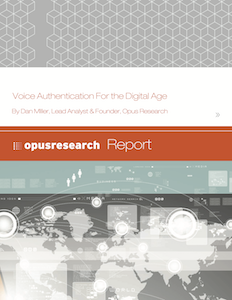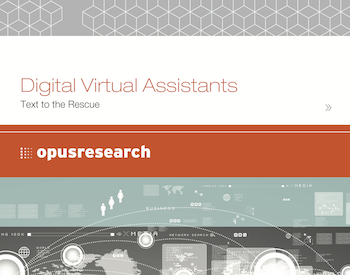 While today’s consumers increasingly participate in multi-channel, digital conversations, some three-quarters of communications still include a voice-based connection with an agent, advisor or subject matter expert in a contact center. Customers are regularly asked for PINs and passwords to access resources and customer assistance. But both customers and contact center agents find such protocols to be time-consuming, inconvenient and, often, ineffective.
While today’s consumers increasingly participate in multi-channel, digital conversations, some three-quarters of communications still include a voice-based connection with an agent, advisor or subject matter expert in a contact center. Customers are regularly asked for PINs and passwords to access resources and customer assistance. But both customers and contact center agents find such protocols to be time-consuming, inconvenient and, often, ineffective.
Fortunately, real-time authentication methods have evolved in parallel with the move to digital commerce. Voice biometrics-based authentication is finding accelerated growth in response to the need for a more natural, secure and personalized user experience. Entering 2016, more than 100 million people are taking advantage of voice-based authentication to support real-time, digital commerce.
In this report, Dan Miller, lead analyst & founder with Opus Research, outlines how real-time voice authentication, as a natural, convenient and conversational modality, is serving as a major accelerant to consumer acceptance.
Topics:
- How voice authentication supports rapid recognition of individuals, their identity and emotional state.
- The role of passive enrollment as a means to accelerate deployment and achieve large scale implementations.
- How to achieve the dual benefit of privacy protection while laying the foundation for personalized services.
- How voice authentication integrates with existing telephony infrastructures and applications, agent desktops and administration systems, addressing this issue and expediting the time to value.
Please fill out the form below to receive a free copy of this whitepaper, and for more information:
Peter Headrick, pheadrick@cgy.bcc.myftpupload.com, +1-415-904-7666
Categories: Featured Research, Advisories, Reports, Conversational Intelligence, White Papers, Intelligent Authentication, Articles

 Opus Research Report: “How AI-Based, Zero-Effort Authentication is Changing the Customer Experience”
Opus Research Report: “How AI-Based, Zero-Effort Authentication is Changing the Customer Experience”  Opus Research Report: “Global Survey: Drivers For Deploying Speech Analytics (Year 3)”
Opus Research Report: “Global Survey: Drivers For Deploying Speech Analytics (Year 3)”  Opus Research Report: “Digital Virtual Assistants”
Opus Research Report: “Digital Virtual Assistants”